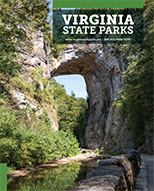Read Our Blogs
Full Moon of the Month: Harvest Moon
The moon holds a magical place of mystery and intrigue for so many. There is something about it that draws our attention and focus, something poets have tried to get to the bottom of for centuries.
People have always been drawn to the allure of the moon, but long ago it also held a much more practical application as a marker of time and reminder of things to do to prepare for the changing weather and seasons. And so names were given to each moon - the folklore varying tremendously around the globe.

The nearly full Sturgeon Moon of August at False Cape State Park
The Full Harvest Moon happens on September 16th this year. The Harvest Moon, or Corn Moon, is interesting for many reasons.
For one, like a couple of our full moons, it doesn’t always happen in the same month every year. Two out of three years it falls in September, but sometimes it lands in October. Whichever full moon is closest to our Autumnal Equinox, the first day of fall, is donned the Harvest Moon.
Fall officially starts on September 22, 2016. The Hunter’s Moon always follows after in our lunar order of things.
Does the Harvest Moon look bigger and brighter?
Many folks think so, but not necessarily. The moon does appear to range in size since its distance from Earth varies throughout the year, but this won't be a super moon. It may fool you that it's bigger though.
The famous “moon illusion” has to deal with it appearing larger when it's low on the horizon. Our eyes trick us with the ground or tree line next to it for reference. Twenty minutes later the moon looks smaller as it rises higher, but it isn’t so.
During this time of year the path of the moon hugs the horizon low across the sky, reinforcing the “moon illusion” as well as increasing the chance for an orange or red moon. This lower path of the moon causes it to rise from 25-40 minutes later each day, compared to the typical 50 minutes between consecutive moonrises.
 Observe the angle of the sun and moon's path near June's summer solstice (screenshot from Stellarium)
Observe the angle of the sun and moon's path near June's summer solstice (screenshot from Stellarium)
 Compare the path of the Harvest Moon in September
Compare the path of the Harvest Moon in September
The angle of the ecliptic, or path of the Sun, Moon and planets, is not stagnant. Like many things within the dynamic clockwork of the seasons and orbits of celestial bodies, variation and little changes occur. So the moon seems to rise closer to sunset for several nights, appearing to be a full moon longer than usual and providing a little more night light than normal.
People of yesteryear took advantage of this phenomenon. In a time before electricity, tractor lights, and headlamps, multiple nights of moonlight right at dusk made a difference. Farmers and families were allowed an easier time harvesting their fields and crops during the cool of night. Anyone who has worked the fields in the heat of the day can attest to the common sense advantage of a couple late nights. These harvests were integral to many people’s survival -- collecting, storing, preserving, and canning invaluable food resources in a short period of time for the upcoming winter.

The Corn Moon is another common name for this moon
There is a penumbral lunar eclipse happening as well, but because the exact time of the Full Moon is during the day in North America (around 3 pm), we won’t be privy to that sight in Virginia. It’ll rise on the 16th right after 7:15pm on the beach and around 7:30pm further west in the mountains. Look for it as it rises (and a little later each night) and you may catch that orange glow as it hangs low on the horizon.
The Harvest Moon is an important marker and reminder as days shorten and temperatures drop that autumn is on her way. This moon holds a special symbolic place in the hearts of many.
Learn more about Virginia State Parks here, or pick a park to visit to view the Corn Moon here.
If you have read the article and have a question, please email nancy.heltman@dcr.virginia.gov.














